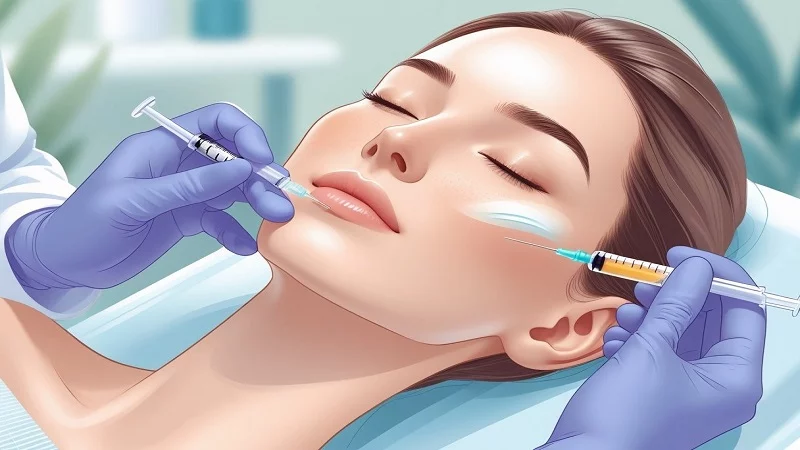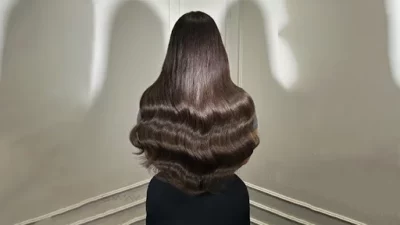In today’s aesthetic medicine, patients increasingly seek facial rejuvenation treatments that enhance their appearance without looking artificial or overdone. Botox and dermal fillers represent two of the most popular non-surgical solutions for addressing signs of aging, offering remarkable results when administered properly. The key to achieving natural-looking results lies in the practitioner’s understanding of facial anatomy, proper technique, and customized treatment plans that complement each patient’s unique features.
These minimally invasive treatments work in different yet complementary ways to rejuvenate the face. Botox temporarily relaxes the muscles that cause dynamic wrinkles, while dermal fillers restore lost volume and smooth static lines. When strategically combined, they can address multiple concerns simultaneously without requiring surgical intervention or extended downtime.
As more individuals explore cosmetic enhancements, the focus has shifted from dramatic transformations to subtle refinements that preserve natural expressions and movement. The goal is no longer to look noticeably “done” but rather to appear refreshed, well-rested, and authentically youthful—as if time has simply been kinder to the face.
Understanding Natural-Looking Results with Botox and Dermal Fillers
Achieving natural-looking results with injectable treatments requires a delicate balance of technique, product selection, and understanding of facial anatomy. The most successful aesthetic outcomes maintain facial harmony while addressing signs of aging without creating an artificial appearance.
What Defines a Natural-Looking Appearance?
Natural-looking results preserve the individual’s unique facial expressions while softening signs of aging. The key principle is subtle enhancement rather than dramatic transformation. When done correctly, others should notice the person looks refreshed or well-rested, not “done.”
Facial harmony plays a critical role in natural aesthetics. This means maintaining proper proportions between facial features and ensuring symmetry without creating perfect uniformity.
The goal is to address volume loss and wrinkles while avoiding telltale signs of treatment such as overfilled cheeks, the “frozen” forehead, or excessively plump lips. A natural appearance moves appropriately with expressions and maintains light-reflecting contours that appear youthful but age-appropriate.
Signs of natural-looking results include:
- Preserved facial movement and expressions
- Appropriate volume for the person’s age and facial structure
- Symmetry without perfect uniformity
- No visible filler edges or unnatural contours
How Botox and Dermal Fillers Work Together
Botox (botulinum toxin) and dermal fillers address different aspects of facial aging, making them complementary treatments. Botox works by temporarily relaxing muscles that cause dynamic wrinkles, particularly in the upper face – forehead lines, glabella (between eyebrows), and crow’s feet.
Dermal fillers, primarily made from hyaluronic acid or calcium hydroxylapatite, restore lost volume and fill static wrinkles. They excel at treating nasolabial folds, marionette lines, and lip enhancement.
When used together in a comprehensive facial rejuvenation approach, these treatments create more balanced results. For example, treating forehead lines with Botox while addressing volume loss in the cheeks with fillers provides a more cohesive improvement than either treatment alone.
The timing between treatments matters as well. Many practitioners recommend Botox first, followed by fillers 1-2 weeks later, allowing the muscles to relax before addressing volume concerns.
Key Areas of Focus for Subtle Enhancement
Certain facial areas respond particularly well to subtle enhancement with injectables. The midface region often experiences volume loss with age, creating hollow cheeks and prominent nasolabial folds. Strategic filler placement can restore youthful contours without creating an overfilled appearance.
The periorbital area (around eyes) benefits from careful combination therapy. Botox can soften crow’s feet while fillers might address tear troughs in suitable candidates. This area requires particular expertise due to its thin skin and proximity to critical structures.
Lip enhancement remains popular but frequently appears unnatural when overdone. For natural results, practitioners should respect the original lip shape and maintain proper proportions between upper and lower lips.
The jawline and chin can be subtly defined with fillers to restore youthful contours without creating an artificial appearance. This often creates significant improvement in the overall facial profile while remaining undetectable as a cosmetic treatment.
Importance of Facial Anatomy and Individualization
Understanding detailed facial anatomy is crucial for practitioners to achieve natural results. Every face has unique muscle patterns, fat distribution, skin thickness, and bone structure that must inform treatment planning.
The initial consultation should include a comprehensive assessment of the patient’s facial anatomy, skin type, and specific concerns. Digital imaging can help identify volume loss patterns and structural changes that aren’t immediately apparent.
A thorough evaluation considers how the face appears in motion, not just at rest. Natural results maintain appropriate movement and avoid the “mask-like” appearance that occurs with overtreatment.
Personalized treatment plans must account for:
- Individual facial proportions
- Ethnic and genetic factors affecting aging patterns
- Patient’s aesthetic goals and comfort level
- Previous treatments and their outcomes
The most successful outcomes result from a conservative, strategic approach that can be built upon gradually rather than dramatic single-session transformations.
Treatment Process and Best Practices for Achieving Natural-Looking Results
Achieving natural-looking results with Botox and dermal fillers requires proper planning, precise technique, and understanding of facial anatomy. Professional execution of these minimally invasive treatments can provide comprehensive facial rejuvenation without the tell-tale signs of cosmetic intervention.
Consultation and Treatment Planning
The journey to natural-looking results begins with a thorough consultation. Trained professionals conduct a comprehensive facial assessment, examining facial structure, muscle movement, and existing asymmetries to develop a personalized treatment plan.
During this phase, practitioners should discuss the patient’s aesthetic goals and set realistic expectations. Clear communication about desired outcomes helps prevent overcorrection—a common cause of unnatural appearances.
Medical history review is essential to identify contraindications and prevent complications. Patients should disclose all medications, supplements, and previous cosmetic treatments they’ve undergone.
Photographs taken before treatment serve as valuable references for both practitioner and patient. These images help document progress and guide future treatments for consistent, natural-looking results.
Injection Techniques and Product Selection
The selection of appropriate products is crucial for achieving natural results. FDA-approved options like Botox, Xeomin, Juvéderm, Voluma, and Radiesse each have specific applications based on treatment areas and desired outcomes.
Product Selection Guidelines:
- Fine lines: Thinner fillers or Botox
- Deep wrinkles: Medium-density fillers
- Volume loss: Thicker fillers like Voluma or Radiesse
Precise injection techniques make a significant difference in outcomes. The micro-droplet technique for Botox prevents the frozen look by strategically placing small amounts at specific points rather than large volumes in few locations.
For fillers, cannula-based injections often reduce bruising and provide more even distribution compared to needle injections. Products containing lidocaine help minimize discomfort during the procedure.
Layering different products at various depths creates more dimensional and natural results than using a single product throughout the face.
Managing and Reducing Risks and Side Effects
While these treatments offer minimal downtime, understanding potential side effects is essential. Common temporary reactions include swelling, bruising, redness, and tenderness at injection sites.
Serious side effects, though rare, can include allergic reactions, infection, vascular occlusion, and in extremely rare cases, vision problems including double vision or blindness.
Risk mitigation strategies include:
- Avoiding blood-thinning medicines and supplements for 1-2 weeks before treatment
- Applying cold compresses post-treatment to reduce swelling
- Following aftercare instructions precisely
- Scheduling follow-up appointments to assess results
Practitioners should maintain emergency protocols and reversal agents (particularly hyaluronidase for hyaluronic acid fillers) to address adverse reactions immediately.
Regular maintenance treatments at appropriate intervals prevent the need for dramatic correction later, supporting the goal of consistently natural-looking results.

Lexy Summer is a talented writer with a deep passion for the art of language and storytelling. With a background in editing and content creation, Lexy has honed her skills in crafting clear, engaging, and grammatically flawless writing.



